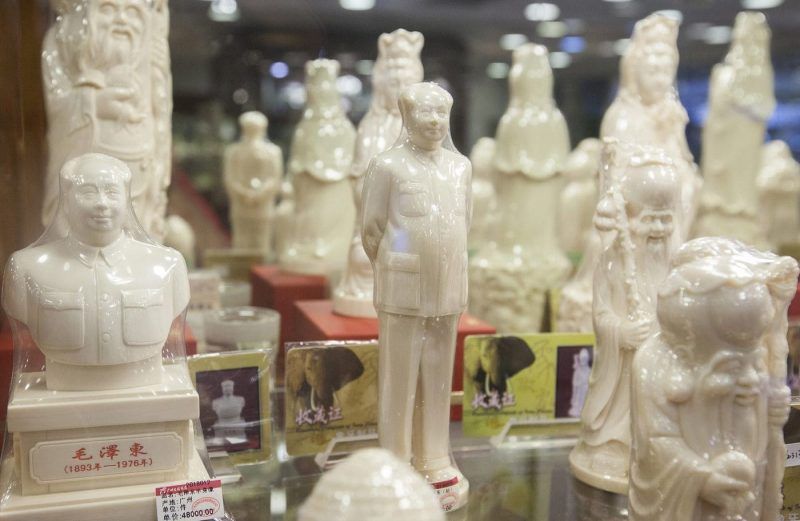
Because of British currency restrictions enacted just before World War II, my father had to come up with an innovative way of getting his cash out of England when, fearing a German invasion, we immigrated to the United States. He settled on silver. Before leaving, he purchased all the Georgian silver objects he could find, with the idea of selling them once the family reached America.
A few months after we arrived, he opened the Harris English Silver Co. in Manhattan. While wartime rationing made many everyday items difficult to obtain, the demands of holidays, birthdays and anniversaries still required special gifts. Antique silver answered that need for many New Yorkers.
By 1944 my father had made more than enough to move the family to California, where he sold most of the remainder of his original inventory. Things were going so well that he decided to take a buying trip to England in 1948, and he took me along as his 11-year-old assistant. At each antique shop we visited, he would slowly survey the goods on display, identify the pieces of particular interest, and then have all the items brought together in one spot where he could inspect them. I was told to pick out anything that caught my eye and bring those pieces, too, to the central collection point.
I soon found that the pieces I gravitated to — boxes, doll house furnishings, knife rests, small carvings, writing implements, hand tools and the like — tended to have one thing in common: They were nearly all made of ivory.
When the shipment from that buying trip reached Los Angeles, my father gave me most of the items I had selected, and that was the start of my ivory collection. After becoming a U.S. diplomat, I added to these original items during trips abroad. And I soon became fascinated by the different uses to which ivory has been put — some practical, because of the material's special properties, and some decorative, because of its unusual beauty.
Ivory pieces, like other artistic expressions, reflect the time and cultures that produced them. That's one of the main reasons people collect artifacts of any sort: to preserve the best examples of cultural expression.
Today, however, ivory collections like mine — and ivory collectors themselves — are being vilified. The current debate in Washington over ivory policy has far less to do with protecting elephants than it does with satisfying the assumptions of animal rights groups, making things simple for government officials and accommodating the special wants of hunters and the special needs of musicians and museum curators. Collectors have little voice in the debate, and their collections have been likened to blood diamonds or denigrated as vanity indulgences. Any harm that American collectors suffer from the new regulations has been dismissed by Dan Ashe, director of the U.S. Fish and Wildlife Service, as collateral damage for the greater good of saving elephants.
Ashe has issued an order that virtually eliminates all trade and movement in the United States of objects made from or with ivory — no matter their origin, age or provenance — by requiring unimpeachable, detailed documentation on the ivory contained in a piece. To buy, trade or sell such pieces, collectors must have original bills of sale or repair invoices or proof of the year of importation into the United States. No collector and very few antique dealers can produce that kind of documentation, especially since none of it was required at the time most of the pieces were imported or purchased. How many treasures inherited from a relative or given as gifts come with written proof of where they came from or how they got here?
These draconian new rules have not been promulgated casually. Ashe believes that virtually ending all trade in African ivory in the United States — thus sending a message that ivory is valueless — is the best way to protect African elephants from the ravishes of poachers.
But that's unrealistic and unproven. Today's poaching problem has its roots in East Asia, where there is still a strong demand for and an active trade in new ivory objects. Demonizing older ivory objects to discourage possession of newer versions of similar items will not bring back the mammoths or save modern elephants from the economic forces that drive poachers.
Indeed, the International Ivory Society, on whose advisory board I sit, believes that taking valuable ivory objects out of circulation will only increase the market price for raw ivory abroad and put elephants in even more danger than at the present.
Everyone is rightly concerned with the plight of African elephants and the horrors that poachers are inflicting on herds across the continent. All of us want to find the right solution to stabilize elephant populations in Africa through sound economic and conservation policies. But the answer must not come at the expense of collectors who play such an important role in preserving important, interesting and revelatory objects in our cultural history.
Godfrey Harris heads a public policy consulting firm in Los Angeles and is principal representative of the Political Action Network of the International Ivory Society.
